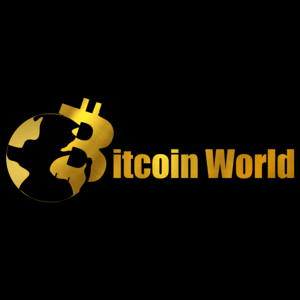Urgent US Dollar Retreat: Can the Rally Recover?
7 min read
For anyone navigating the dynamic world of cryptocurrencies and digital assets, keeping an eye on global macroeconomic trends is essential. The performance of major fiat currencies, particularly the US Dollar , often provides crucial context for broader market movements. Recently, the US Dollar has experienced a notable Dollar retreat , pulling back from previous highs. This shift has sparked discussions about its future trajectory and what might be required to reignite a sustainable Dollar rally . Understanding the forces behind this retreat and the conditions necessary for a rebound is key to anticipating potential shifts in the global financial landscape. Understanding the Recent US Dollar Retreat The recent weakening of the US Dollar index (DXY), which measures the dollar against a basket of other major currencies, reflects a significant shift in market sentiment. After a period of strength, driven by factors like aggressive interest rate hikes by the Federal Reserve and relative global economic uncertainty, the currency has lost ground. This Dollar retreat isn’t a sudden collapse but rather a gradual depreciation influenced by several interconnected factors. Several elements have contributed to this pullback: Changing Interest Rate Expectations: Market participants have begun pricing in potential interest rate cuts by the Federal Reserve sooner than previously anticipated. Improving Global Economic Outlook (Relative): While not universally strong, signs of stabilization or modest improvement in other major economies have reduced the relative appeal of the dollar as a safe haven. Specific Economic Data Releases: Recent Economic data from the United States has sometimes fallen short of expectations, suggesting a potential cooling of the economy. Technical Factors: The dollar’s prior strength led to stretched positioning among traders, making it susceptible to pullbacks. This period of Dollar retreat represents a recalibration of expectations based on evolving economic conditions and central bank signals. The Impact of Recent Economic Data Economic data releases are the lifeblood of currency markets. Each piece of information, whether on inflation, employment, consumer spending, or manufacturing activity, provides clues about the health of the economy and the likely path of monetary policy. Recent US Economic data has played a pivotal role in the Dollar retreat . Consider the impact of key data points: Inflation Reports: While inflation has cooled from its peaks, recent reports haven’t always shown a consistent, rapid decline towards the Federal Reserve’s target. However, any data suggesting inflation is firmly on a downward path increases the likelihood of rate cuts, pressuring the dollar. Jobs Reports: The US labor market has remained remarkably resilient. However, some recent reports have shown signs of cooling, such as slightly higher unemployment rates or slower wage growth. A weakening labor market gives the Fed more room to consider rate cuts, impacting the US Dollar . GDP Growth: Gross Domestic Product (GDP) data indicates the overall pace of economic activity. Slower-than-expected growth figures can diminish the appeal of the dollar, as they suggest less robust economic performance compared to other regions. Consumer Confidence and Retail Sales: These indicators provide insight into consumer spending, a major driver of the US economy. Weak readings can signal potential slowdowns, influencing the Fed’s stance and the dollar’s value. The market’s reaction to this Economic data is not just about the number itself but how it compares to forecasts and what it implies for future Interest rates . Disappointing data tends to weigh on the US Dollar , while surprisingly strong data can provide support. Interest Rates and Federal Reserve Policy Perhaps the single most significant driver of currency valuations, particularly for the US Dollar , is the stance of the central bank on Interest rates . The Federal Reserve’s monetary policy directly impacts the attractiveness of dollar-denominated assets to global investors. When the Fed raises Interest rates , it makes dollar assets like US Treasury bonds more attractive relative to those in countries with lower rates. This increases demand for the dollar, leading to appreciation. Conversely, when the Fed signals or implements rate cuts, the yield advantage diminishes, potentially leading to capital outflows and a weaker dollar. The recent Dollar retreat is heavily tied to evolving expectations about the Federal Reserve’s future policy path. For a considerable period, the market was focused on how high the Fed would raise rates. Now, the focus has shifted to when and how quickly the Fed might start cutting rates. Market participants closely watch: FOMC Statements: The official communications from the Federal Open Market Committee (FOMC) provide direct insight into the Fed’s assessment of the economy and its policy intentions. Speeches by Fed Officials: Comments from individual Fed governors and regional bank presidents offer clues about internal discussions and differing viewpoints on policy. Economic Projections: The Fed periodically releases its own forecasts for inflation, growth, unemployment, and the future path of the federal funds rate (the ‘dot plot’). Any hint that the Fed is becoming more dovish (leaning towards lower rates) puts downward pressure on the US Dollar , contributing to the Dollar retreat . Conversely, hawkish signals (leaning towards higher rates or keeping them high for longer) can support the dollar. What’s Needed for a US Dollar Rally? While the US Dollar has recently retreated, the potential for a renewed Dollar rally remains. For the currency to regain significant strength, several conditions would likely need to materialize: Key factors that could support a Dollar rally include: Stronger-Than-Expected Economic Data: A consistent string of positive Economic data – particularly on inflation remaining sticky or the labor market staying robust – could push back expectations for Fed rate cuts, providing a tailwind for the dollar. Shift in Federal Reserve Stance: If Fed officials begin to signal that Interest rates will need to stay higher for longer than the market currently expects, or even hint at further hikes (though less likely now), this would be a strong catalyst for a Dollar rally . Increased Global Uncertainty: Periods of geopolitical tension, financial instability elsewhere in the world, or significant economic slowdowns in other major economies can trigger safe-haven flows into the US Dollar , fueling a rally. The dollar often benefits when global risk aversion increases. Deterioration in Other Economies: If the economic outlook worsens significantly in Europe, China, or other major regions relative to the US, capital could flow back into dollar assets, supporting a Dollar rally . Fiscal Policy Developments: Changes in US government spending, taxation, or debt issuance could also indirectly influence the dollar’s value by impacting economic growth and investor confidence. Essentially, a sustained Dollar rally requires either a fundamental improvement in the US economic outlook relative to others, a change in Fed policy favoring higher rates, or a return of global risk aversion that boosts the dollar’s safe-haven appeal. Challenges Facing the Dollar Rally Despite the potential for a rebound, several headwinds could prevent a significant Dollar rally or even exacerbate the current Dollar retreat . Potential challenges include: Continued Improvement in Global Economies: If Europe, Asia, and other regions experience stronger-than-expected economic recoveries, this could diminish the relative attractiveness of the US economy and its assets. Aggressive Fed Rate Cuts: If inflation falls rapidly and the Fed decides to cut Interest rates more aggressively or sooner than currently priced in, the yield differential favoring the dollar would shrink significantly. US Fiscal Situation: Concerns about the growing US national debt and fiscal deficits could, over the long term, weigh on confidence in the dollar, although this is typically a slower-moving factor. Coordination Among Central Banks: While less common, coordinated action or diverging policy paths among major central banks could influence currency flows. Market Positioning: If market participants become heavily positioned for a weaker dollar, any minor positive news could trigger a short-covering rally, but a sustained rally requires more fundamental drivers. The path forward for the US Dollar is complex and dependent on a confluence of domestic and international factors. The current Dollar retreat highlights the sensitivity of the currency to shifts in economic expectations and monetary policy signals. Navigating the Current Macro Landscape For market participants, understanding the drivers behind the US Dollar ‘s movements is crucial. While crypto assets often trade on their own specific narratives, they are not immune to the broader currents of global finance. A strong or weak dollar can influence capital flows and risk appetite across all asset classes. Actionable insights include: Monitor Economic Data Closely: Pay attention to key US Economic data releases (inflation, jobs, retail sales) and how they deviate from consensus forecasts. These are often immediate market movers. Track Federal Reserve Commentary: Follow statements and speeches from Fed officials for clues about their thinking on inflation and Interest rates . The market hangs on every word. Observe Global Developments: Keep an eye on economic and political developments in Europe, China, and other major economies. Their performance relative to the US impacts the dollar’s value. Understand Intermarket Relationships: Recognize that currency movements are interconnected with bond yields, commodity prices, and equity markets. A falling dollar, for instance, can sometimes be associated with rising commodity prices. The current Dollar retreat is a reminder that currency markets are constantly adjusting to new information. Whether this retreat continues or gives way to a renewed Dollar rally will depend heavily on the incoming stream of Economic data and the Federal Reserve’s response. In conclusion, the recent Dollar retreat reflects a market adjusting to evolving expectations around US Economic data and the future path of Interest rates . While signs of cooling inflation and a potentially less aggressive Fed have weighed on the currency, the prospect of a renewed Dollar rally is not off the table. A consistent flow of strong US Economic data , a shift in the Federal Reserve’s messaging towards keeping Interest rates higher for longer, or an increase in global economic uncertainty could all provide the necessary impetus for the US Dollar to regain strength. However, continued improvements in other major economies or more aggressive Fed rate cuts pose significant challenges to such a rally. The market remains highly data-dependent, with the dollar’s future path hinging on how the economic landscape unfolds and how central bankers respond. To learn more about the latest Forex market trends, explore our article on key developments shaping the US Dollar’s future liquidity and institutional adoption outlook.

Source: Bitcoin World



